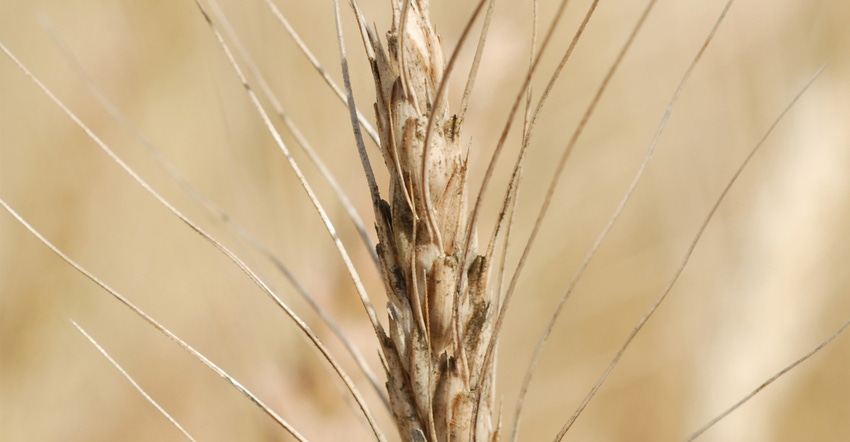
This year has been ripe for wheat disease. With moist conditions through spring and early summer, Nebraska's winter wheat crop has been hit with several fungal diseases — including leaf rust, stripe rust, powdery mildew, leaf spots and, perhaps the most devastating, fusarium head blight.
However, as growers make postharvest decisions for the 2019 winter wheat crop — and for planting next year's crop — Stephen Wegulo, Nebraska Extension plant pathologist, recommends taking preventive measures to protect against fungal diseases next year — especially after a year with so many diseases present.
"Just like ourselves, we don't wait to get sick. We do everything we can to prevent getting sick," Wegulo says. "That's the same approach we should use with wheat diseases. In the event of diseases, when they hit you, they really hit you hard."
Another fungal disease to take preventive measures against is common bunt, or stinking smut.
"If you get common bunt or stinking smut, it's very likely you will not be able to save the grain," Wegulo says. "With stinking smut, there's only one effective measure for control, and that's to treat the seed with a fungicide before planting. So, try as much as possible to use certified fungicide-treated seed. That really helps to prevent common bunt, but look at it as insurance — don't look at it as a way to prevent common bunt."
Treating seed also will prevent loose smut and protect the germinating seed from soilborne fungal pathogens.
Meanwhile, this year's fusarium head blight problems have ramifications for next year's winter wheat crop, Wegulo adds.
"If you plant seed that has damaged kernels from fusarium head blight, the germination would be really poor,” he says. “Fusarium will also cause seedling blights when you plant infected seed. That's another reason to plan to treat seed with fungicide, especially this year, because we are going to have fusarium-damaged kernels within that seed. To prevent those seedling blights, you need to treat that seed with fungicide before you plant."
In addition, with wet weather going into this spring, Wegulo notes there's a lot of moisture in wheat heads, which likely will lead to certain superficial fungi developing in the heads. This includes sooty molds developing on the outside of the head.
"Those fungi start on the outside of the head, but they work their way up the kernels,” Wegulo says. “They will start causing problems like black point, where the embryo part of the seed is blackened. That's why, this year particularly, I encourage you to use fungicide-treated seed to avoid problems with the next crop."
However, Wegulo also reminds growers, "We should not forget about those diseases we are not seeing."
For example, even though there haven't been as many problems with wheat streak mosaic virus this year, it's still a good idea to take measures to prevent wheat curl mites, which spread the disease, from spreading and causing infections in fall. That's why it's important to take measures to control volunteer wheat, where wheat curl mites colonize.
"That does not mean that we should now relax and not control volunteer wheat," Wegulo says. "So, we should be right on it after harvesting, and that window between harvesting and planting in the fall, make sure we control volunteer wheat."
About the Author(s)
You May Also Like






